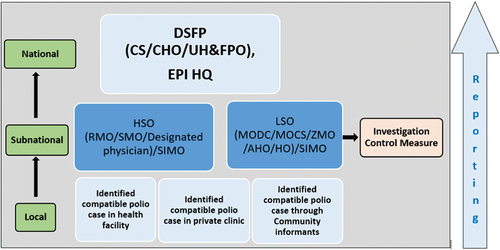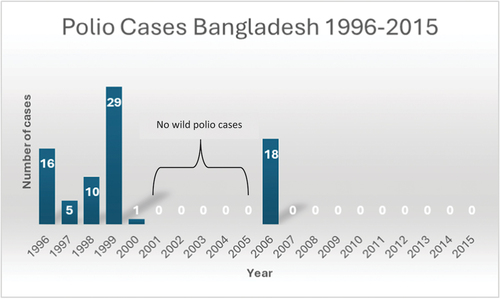Figures & data
Table 1. Overview of CFIR domains, indicating facilitators of and barriers for the Polio programme implementation in Bangladesh.
Table 2. Categories of the identified grey literature.
Table 3. Profile of the survey respondents.
Table 4. AFP surveillance performance indicators Bangladesh, 2002–2016.
Figure 2. Key events of the polio program, Bangladesh.

Figure 4. The structure and reporting system of the polio program in Bangladesh.

Table 5. Contributing factors and challenges of AFP surveillance implementation (survey).
Data availability statement
Data and publications from this project will be Open Access and available via an online repository.


